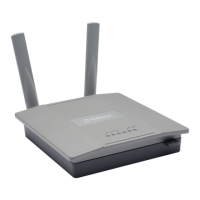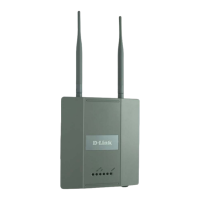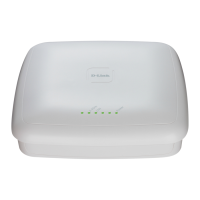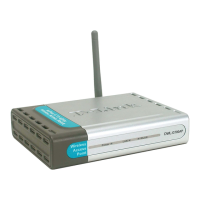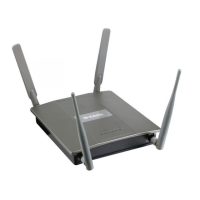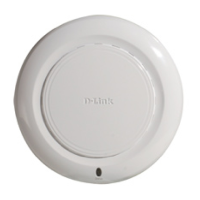Unied Access Point Administrator’s Guide
Page 25
January 2015
Section 3 - Viewing Access Point Status
Note: To apply your changes, click Apply. Changing some settings might cause the AP to stop
and restart system processes. If this happens, wireless clients will temporarily lose connectivity.
We recommend that you change AP settings when WLAN trafc is low.
If you enabled the Log Relay Host, clicking Apply will activate remote logging. The AP will send its kernel messages
real-time for display to the remote log server monitor, a specied kernel log le, or other storage, depending on how
you congured the Log Relay Host.
If you disabled the Log Relay Host, clicking Apply will disable remote logging.
Viewing Transmit and Receive Statistics
The Transmit/Receive page provides some basic information about the current AP and a real-time display of the
transmit and receive statistics for the Ethernet interface on the AP and for the VAPs on all supported radio interfaces.
All transmit and receive statistics shown are totals since the AP was last started. If you reboot the AP, these gures
indicate transmit and receive totals since the reboot.
To view transmit and receive statistics for the AP, click the Transmit/Receive page.
Figure 7 - Viewing Trafc Statistics
Field Description
Interface The name of the Ethernet or VAP interface.
Status Shows whether the interface is up or down.
MAC Address MAC address for the specied interface. The UAP has a unique MAC address for each
interface. Each radio has a different MAC address for each interface on each of its two
radios.
VLAN ID Virtual LAN (VLAN) ID.
You can use VLANs to establish multiple internal and guest networks on the same AP.
The VLAN ID is set on the VAP page. (See “Conguring Load Balancing” on page 60)
Name (SSID) Wireless network name. Also known as the SSID, this alphanumeric key uniquely identies a
wireless local area network.
The SSID is set on the VAP page. (See “Conguring Load Balancing” on page 60)
Transmit and Receive Information
Total Packets Indicates total packets sent (in Transmit table) or received (in Received table) by this AP.
Total Bytes Indicates total bytes sent (in Transmit table) or received (in Received table) by this AP.
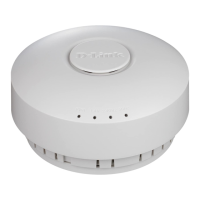
